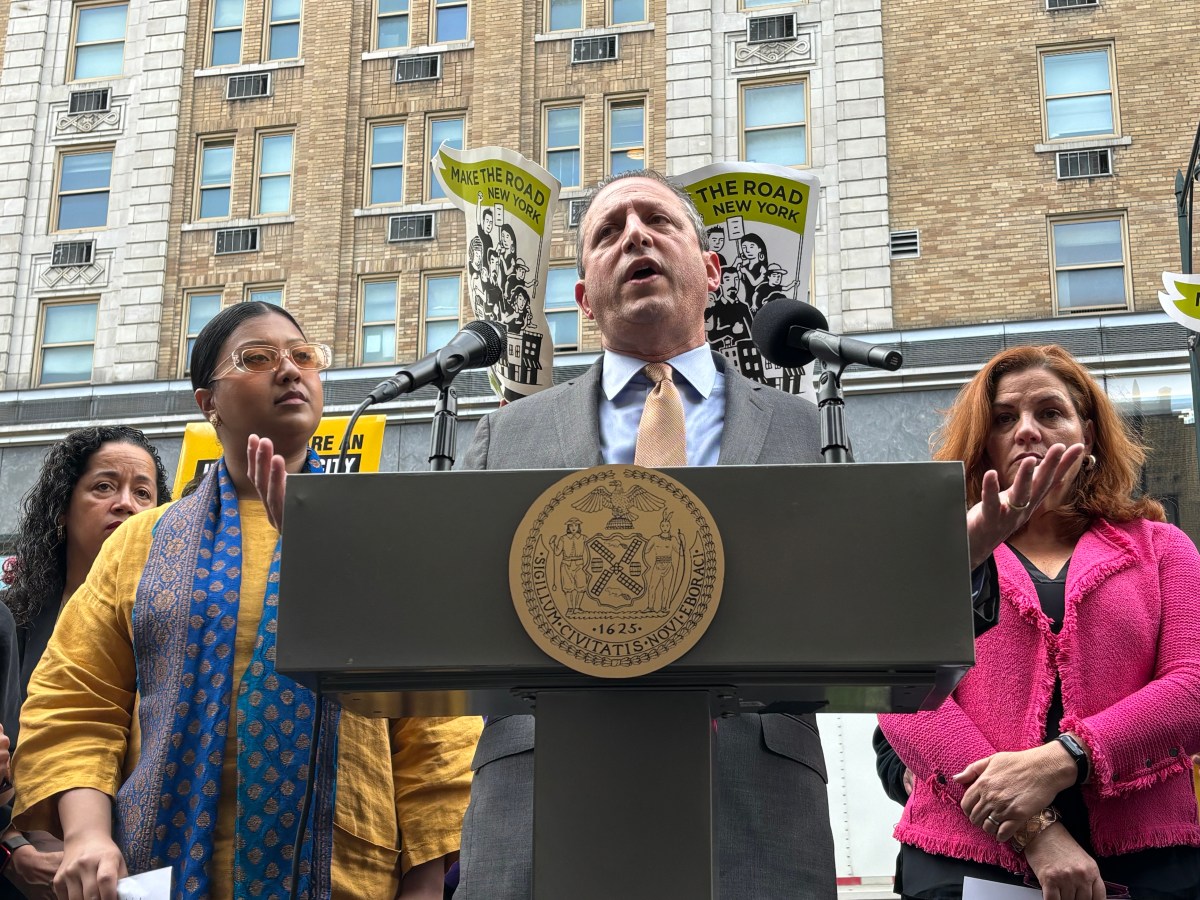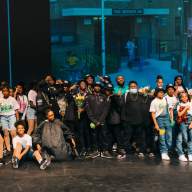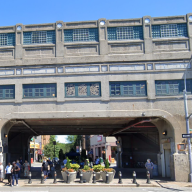By Daniel Massey
Instead of taking the elevator, 9-year-old Alexander Klee snaked his way through a two-story netted climbing structure at the Long Island Children's Museum on Sunday afternoon, crawling and clawing his way to the second floor.
“Climb-It,” intended by its designer to stretch children's muscles and imaginations, is one of 12 interactive exhibits at the new 46,000-square-foot museum, which greeted donors and their guests last weekend, but officially opened its doors Wednesday.
Just 15 miles, and about 25 minutes by car, from the Queens border, the museum sits in the shadows of the Nassau Veterans Memorial Coliseum on the site of a former World War II bomber hangar.
Blessed with a 60-year rent-free lease from Nassau County, Executive Director Bonnie Dixon has overseen a privately-funded $14 million metamorphosis of the museum from a small site inside a Keyspan office building to its new home, which is nine times larger. Attendance is expected to jump from 70,000 to more than 250,000 visitors a year due to the increased space and new exhibits at the converted aviation hangar.
While Dixon said the museum is a great place for a family to have three hours of fun on a Saturday afternoon, she emphasized that it also has the potential to be much more than that. Each of the 12 exhibits was put together by a separate team of designers, creating a wide variety of learning experiences for children, she said.
“Children will find their learning style here that may not be evident at home or in the classroom,” she said. “Things we have here almost trick a child into wanting to learn and find out more.”
The “tricks” range from “Sandy Island,” where kids can turn rocks into sand and watch in real time as the forces of nature transform a Long Island coastline, to “mUSic,” where children can play instruments from around the world, and ones unique to the museum.
Among the museum’s instruments are a xylophone made of wrenches and a music-making conveyor belt called “kerplunk,” in which guests fill depressions with balls that then fall onto tone bars, sounding tunes such as Beethoven’s “Ode to Joy,” “Row, Row, Row Your Boat,” or whatever composition young musicians conjure up in their minds.
In the hands-on “Changes and Challenges” exhibit, guests discover what it is like to have a disability. Upon entering the display, children can sit in a wheel chair and board a real Ford mini-van equipped for a handicapped driver.
One area transports visitors to a school for the blind, asking them to use their sense of touch to solve simple math problems. In the section devoted to the deaf, visitors place headphones over their ears and practice spelling their name with the American Sign Language alphabet.
Next door is the “Communication Station,” where guests transform themselves into members of the evening news team, broadcasting neighborhood events, weather updates and even play-by-play of Knicks and Rangers games from a complete television studio. Monitors allow the aspiring newscasters to watch themselves in action.
Most of the exhibits include computers, which allow visitors to get beyond what Dixon calls the “surface experience” of attending the museum.
“In each exhibit there’s a deeper experience,” she said, recalling a 6-year-old boy she had seen playing with blocks in the “Bricks and Sticks” exhibit. “He had built a structure with blocks and then turned his attention to one of the computers,” she recalled. “He was going deeper.”
The museum is designed for children ages 2-12, but there is a “TotSpot” for infants and their caregivers, and Dixon said she’d seen her fair share of adults “that really hogged the computers” during the weekend preview.
In “Communication Station” a grandfather could be seen imitating Marv Albert as he described the play-by-play of a Knicks game to his infant grandson.
Weekly performances in the museum’s 150-seat theater make the facility a place to which families can return every week, Dixon said. The premier performance, which will take place Sunday, is an interactive concert where an ensemble of international musicians will take the audience on a world tour of music in five languages, including Zulu and Swahili.
And, just in case the visitors do not learn enough from the various exhibits and performances, the building itself is a teaching tool, according to Architectural Project Manager Lita Riddock, who oversaw the 14-month conversion of the structure from an airport hangar into a museum.
“The appearance of the hangar is still here and you can see it in all the exposed duct work, the lighting and all the columns,” she said. “The structure of the building is really apparent and is an exercise for kids without them thinking about it.”
Catherine Bromley, of Manhattan, who brought her two grandchildren to the museum Sunday, summed up the feeling that swept the building from “Bubbles,” where children can enclose themselves in life-size bubbles, to “ToolBox,” where saws and screwdrivers are the tools of choice.
“The kids don't want to leave,” she said.
Reach reporter Daniel Massey by e-mail at Timesledger@aol.com or call 229-0300, Ext. 156.
























